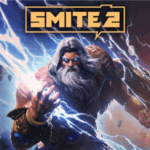In the crowded world of online multiplayer games, Conqueror’s Blade stands out as a hybrid unlike any other. Developed by Booming Tech and published by MY.GAMES, this medieval warfare MMO merges real-time third-person action with large-scale tactical battles and strategic kingdom management. Players step into the role of a warlord in a persistent, player-driven world where combat skills and leadership decisions determine the rise or fall of empires.
Released in 2019 and regularly updated since, Conqueror’s Blade offers a fusion of mechanics from hack-and-slash action games, real-time tactics, and massive multiplayer online role-playing games. Its unique focus on medieval warfare, siege combat, and class-based hero play has earned it a passionate, competitive community. Whether leading an assault on a castle, managing a warband of troops, or forming alliances in the open-world campaign, the game constantly demands both mechanical skill and strategic foresight.
This article provides a deep look into the structure and appeal of Conqueror’s Blade, analyzing its gameplay evolution, faction systems, seasonal content, and the intense cooperative and competitive landscape that keeps its community engaged.
1. Introduction to the World of Conqueror’s Blade
Conqueror’s Blade is set in a rich, fictional medieval world divided into regions controlled by player-run houses and alliances. Players assume the role of a warlord — a hero-class unit who leads armies and takes part directly in battles using real-time action combat mechanics.
The world is structured around seasons, each introducing new units, cosmetics, regions, and sometimes story-driven events. These seasons form the backbone of the game’s live service model, ensuring a continuous stream of content and new objectives.
From the beginning, players are immersed in a world that is equal parts chaotic battlefield and strategic sandbox. It’s a game where military dominance, economic control, and diplomacy all play critical roles.
2. Real-Time Hero Combat
At the heart of Conqueror’s Blade is its hero combat system. Players control their warlord from a third-person perspective, using a variety of melee and ranged classes to engage enemies directly.
The hero system functions like a class-based action RPG. Each class — from longsword knights and poleaxe fighters to musket sharpshooters and glaive-wielding champions — has its own combo mechanics, stamina systems, and weapon mastery trees. Skillful combat execution, timing, and positioning are essential.
Unlike traditional MMOs, you don’t just click skills on a bar. You swing, block, dodge, and unleash powerful abilities in the thick of battle. The personal combat feels impactful, and being able to turn the tide with a well-timed charge or execution adds intensity to every encounter.
3. Unit Management and Army Customization
Alongside their hero, players command units, which are AI-controlled squads ranging from spearmen and archers to cavalry and artillery crews. Units are core to battlefield success, and understanding their strengths, weaknesses, and formations is vital.
Each unit can be unlocked and leveled through gameplay, with dozens of types available across different seasonal trees and factions. Some are fast skirmishers perfect for flanking, while others are heavy defensive infantry built to hold choke points.
Unit synergy is a key strategic element. For example, pairing shielded pikemen with ranged support allows for powerful area control. Smart warlords know how to position, rotate, and protect their troops to maximize impact.
4. Siege Battles and Territory Warfare
One of the most exhilarating parts of Conqueror’s Blade is its siege battles. These massive 15v15 matches pit players against each other in fortress assaults or defenses, blending tactical positioning with full-scale medieval warfare.
Sieges involve breaching gates with battering rams, scaling walls with ladders, deploying catapults and cannons, and controlling capture points. Players must coordinate with teammates, defend critical areas, and use terrain to their advantage.
In the open world, territory wars add another layer. Player-run houses can claim fiefs and castles, attacking or defending them in scheduled battles. These conquests influence the larger map and determine regional control, taxes, and political alliances.
5. Classes and Weapon Variety
Conqueror’s Blade currently features a dozen weapon classes, each offering a completely different combat style. Players can switch between weapons outside of battle, allowing flexible playstyles without the need to reroll a new character.
Weapons include sword and shield, dual blades, spear, poleaxe, longsword, shortbow, musket, glaive, maul, and more. Each has unique attacks, mobility options, and utility skills that suit different battlefield roles.
Progression is deep, with skill trees, doctrines, and armor sets that modify play. Whether you prefer a tanky frontline commander, a quick skirmisher, or a support-oriented healer, the class system offers significant customization.
6. Seasonal Structure and Content Updates
Conqueror’s Blade is built around a seasonal structure. Each season typically lasts around 10–12 weeks and introduces new battle pass content, cosmetic gear, hero cosmetics, and three new seasonal units.
These units often reflect historical or mythological cultures such as Vikings, samurai, crusaders, or steppe warriors. Seasonal campaigns also bring narrative themes and regional conquests, adding flavor and direction to the overarching world war.
The seasonal structure keeps the game feeling fresh, but it also encourages time-sensitive progression. Active players benefit from participation, while newcomers may need to catch up by unlocking older seasonal units through alternative methods.
7. Player-Driven Alliances and Diplomacy
A defining feature of Conqueror’s Blade is its player-driven diplomacy. Warlords can join or create Houses — guild-like groups that work together to control regions, compete in territory wars, and influence politics.
Alliances form between multiple houses, leading to large-scale coalitions that coordinate war efforts. Discord servers, political deals, and betrayals are part of the meta-game that exists beyond the battlefield.
This dynamic creates emergent gameplay. The social aspect is essential, as organizing defenses, planning attacks, and managing resources require leadership and communication. The political drama often rivals the battles in terms of excitement.
8. Open World Activities and PvE Content
Outside of PvP sieges and battles, Conqueror’s Blade offers a range of PvE activities. These include expeditions, raids, rebel camps, and world bosses. PvE serves as both a gear progression path and a way to practice tactics.
Expeditions challenge players to use unit combinations to fight off waves of enemies. Rebel camps offer loot and influence over local zones. Seasonal events sometimes add narrative PvE scenarios with special rewards.
Gathering, crafting, and economic trade also take place in the open world. Players can farm, mine, and craft equipment or unit kits to support their war efforts. These systems make the world feel more alive and interconnected.
9. Visuals, Sound, and Immersive Presentation
Conqueror’s Blade may not rival AAA RPGs in raw fidelity, but it delivers impressive visuals for large-scale multiplayer environments. The medieval cities, snowy mountains, desert fortresses, and rolling plains are rendered with atmospheric lighting and detailed architecture.
Armor and weapon designs reflect historical influences with a touch of fantasy. Units are animated convincingly, with detailed armor clashes, charge formations, and siege weapon operation. The battlefield is often chaotic but cinematic.
Audio plays an immersive role. Horns signal enemy charges, catapults slam against walls, and unit commanders shout commands in tense moments. Combined with dynamic weather and time-of-day effects, the presentation deepens the sense of realism.
































